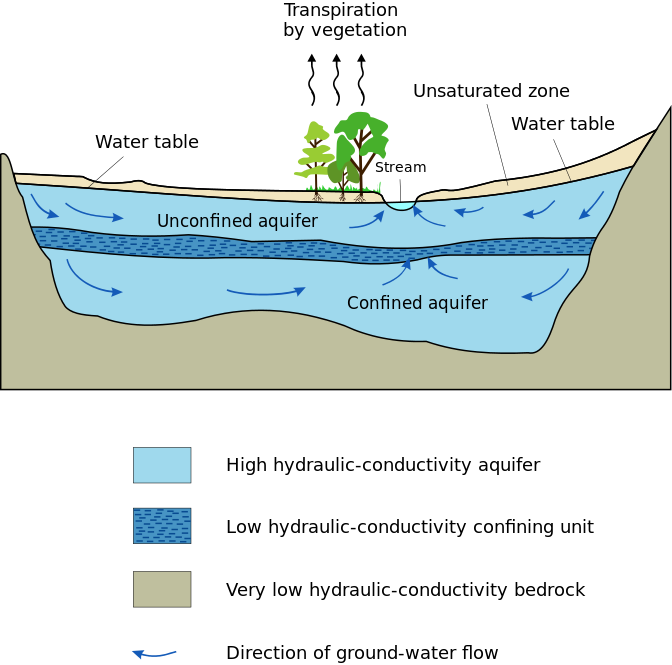The age of groundwater can vary over a large span. The moment a drop of rain enters the ground it becomes groundwater and when it reaches the groundwater table, the water starts to flow towards a lower hydrostatic level, usually towards the sea, a river or a lake. If you have a well, you'll pump up water to lower the hydrostatic level near the well, so that local groundwater will flow towards the well instead of the ocean.
The velocity of the flow depends on a number of parameters. Naturally, the distance from the recharge area, the hydrostatic pressure, that is the elevation difference over the flow, and finally but not least important, the permeability of the soil and rocks it flows through. If the ground consists of e.g. porous sand, gravel from outwash planes or very fractured rocks the water will flow fast towards a lower level, but if the ground in impermeable, eg. shale or igneous rocks without cracks, the flow will be much slower.

If you have sandy ground, and shallow groundwater table, the pesticides will reach the groundwater table in very short time (maybe days?), if the aquifer is covered by clay, it might take millennia. It also depends on the unsaturated zone and the mosture above the groundwater table.
So, unfortunately, it's impossible to answer your question(s) without more information. Shallow groundwater is typically from zero to a couple of hundred years old. Some thousand years are not uncommon and for deep aquifer (that have little hydrostatic pressure reason to flow towards an ocean). It can be millions or even billion years old.
The age of groundwater can be detected by Carbon-14 decay or by measuring known contamination, eg. CFCs, depending on the age range.
If you are worried about contamination of you your well, apart from analyse the water, I'd make some sketches of the groundwater flow, e.g. map nearby rivers (river surface = groundwater surface) and the hydrostatic level (well water surface) in your well to find out what direction the water and contamination flow. If the contamination is between you and a river, the best guess would be that the contamination flows away from you, but if you pump up alot of water, the gradient of the groundwater table might change and the contaminations flow toward your well instead of the river.
